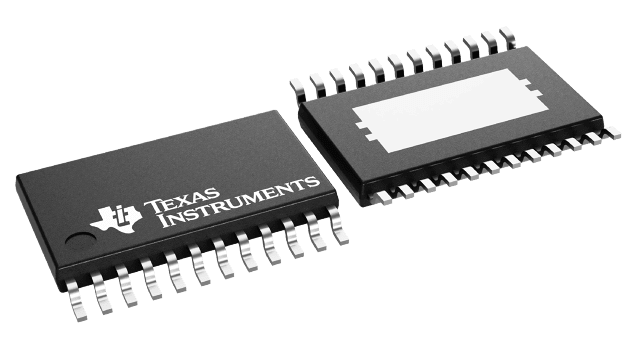Texas Instruments
TPA2008D2PWPR
TPA2008D2PWPR
Couldn't load pickup availability
TPA2008D2PWPR Texas Instruments - Yeehing Electronics
3-W, stereo, analog input Class-D audio amplifier with DC volume control
Pricing (USD)
| Quantity | Unit Price |
| 1 — 99 | 1.42 |
| 100 — 249 | 1.173 |
| 250 — 999 | 0.843 |
| 1,000 + | 0.44 |
The above prices are for reference only.
Specifications
| Manufacturer | Texas Instruments |
| Product Category | Audio Amplifiers |
| RoHS | Y |
| Series | TPA2008D2 |
| Product | Audio Amplifiers |
| Class | Class-D |
| Output Power | 3 W |
| Mounting Style | SMD/SMT |
| Type | 2-Channel Stereo |
| Package / Case | HTSSOP-24 |
| Audio - Load Impedance | 3 Ohms |
| THD plus Noise | 0.3 % |
| Supply Voltage - Max | 5.5 V |
| Supply Voltage - Min | 4.5 V |
| Minimum Operating Temperature | - 40 C |
| Maximum Operating Temperature | + 85 C |
| Packaging | Reel |
| Description/Function | Speaker |
| Features | DC Volume Control |
| Height | 1.15 mm |
| Input Type | Differential |
| Length | 7.8 mm |
| Output Type | 2-Channel Stereo |
| Supply Type | Single |
| Width | 4.4 mm |
| Brand | Texas Instruments |
| Number of Channels | 2 Channel |
| Supply Current - Max | 15 mA |
| Development Kit | TPA2008D2EVM |
| Moisture Sensitive | Yes |
| Operating Supply Current | 7 mA |
| Operating Supply Voltage | 4.5 V to 5.5 V |
| Output Signal Type | Differential |
| Pd - Power Dissipation | 2180 mW |
| Product Type | Audio Amplifiers |
| PSRR - Power Supply Rejection Ratio | 70 dB |
| Factory Pack Quantity | 2000 |
| Subcategory | Audio ICs |
| Unit Weight | 0.003460 oz |
For more information, please refer to datasheet
Documents
| TPA2008D2PWPR Datasheet |
More Information
The TPA2008D2 is a third generation 5-V class-D amplifier from Texas Instruments. Improvements to previous generation devices include: dc volume control, lower supply current, lower noise floor, higher efficiency, smaller packaging, and fewer external components. Most notably, a new filter-free class-D modulation technique allows the TPA2008D2 to directly drive the speakers, without needing a low-pass output filter consisting of two inductors and three capacitors per channel. Eliminating this output filter saves approximately 30% in system cost and 75% in PCB area.

